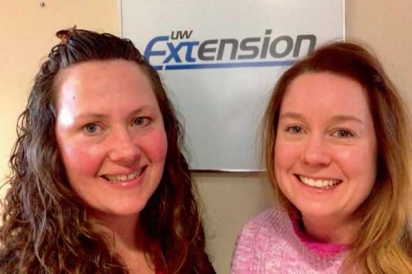Plan and Prepare Your Garden for Spring
The Root of it All
As we “think spring,” our bodies crave just-picked lettuce greens, crisp cucumbers, sweet fresh carrots and the anticipated bounty of a garden. Turn those cravings into motivation by planning and preparing your garden for growing. A few hours of planning now will result in a more robust and rewarding harvest. In planning for your garden consider what crops you want to eat and how much space you have to dedicate to a vegetable garden.
We recommend making a list of “favorite family vegetables.” It’s disheartening to plant, tend and cook only to realize the variety of kale, beans or tomatoes you chose wasn’t liked by anyone around your family table! Get buy-in right from the start by inviting your family to look at seed catalogs with you.
After the wish list of veggies is created, consider which items will provide the biggest bang for your family’s food budget. For instance, a four-pack of tomato seedlings may cost $4, but has the potential to reap two bushels of fresh tomatoes that would retail at market for $275 ($3/pound). That’s an impressive return on investment!
Real estate is the next consideration. You know what they say about real estate? Location, location, location! The same goes for your veggie garden. You will want to choose a site that receives at least 6-8 hours of direct sunshine daily and is in close proximity to a water source. How many square feet of space do you have? Maximize your space with an intensive gardening method called “Square Foot Gardening.” Square Foot Gardening, often a 4’x4’ square, requires up to 80% less space than traditional row gardening and reaps the same bounty. Often, the garden is built as a custom-raised bed so that it is easier to access and maintain with no need to walk on the soil and create compaction. For more information on how to build a square foot garden see: portage.uwex.edu/files/2014/08/Square-Foot-Gardening1.pdf
And at the root of it all is fertile, high quality soil that can breathe. Soil that is rich in organic matter from your compost pile will provide most (if not all) of the nutrients used by plants. Nitrogen (N) makes the luxurious green growth necessary for leaf crops. Phosphorus (P) promotes the development of strong stems and seeds as well as resistance to disease. Potassium (K) is needed for healthy stems and roots, and for good fruit production.
Plants use a long list of trace elements. Like people, they need a balanced diet. The more variety of organic matter you put into your compost, the better results you will have. Every few years you may want to consider sampling your soil to confirm its nutrient composition; your local UW-Extension office can help process soil for you.
Want something fresh and crunchy all season long? Read your seed packets and map planting and harvest dates out on your calendar. As soon as one crop is harvested, you can be ready to plant another. Gardeners at The Community’s Garden in Sturgeon Bay are able to have fresh greens from April-November by planting a few seeds every week throughout the entire growing season and planting them during the heat of summer underneath shade plants.
This growing season, there are gardening classes for gardeners at all stages of learning. Crossroads of Big Creek in Sturgeon Bay will be hosting a Gardening Workshop for Families on April 27, May 11, and May 25. The Community’s Garden will be hosting topic specific garden classes such as Pollination and Staking for Success, each Tuesday night in July at 5:00. Pre-registration is requested by contacting Jenny Spude, Registered Dietitian with Wisconsin SNAP-Ed – UW Extension jennifer.spude@ces.uwex.edu or 746- 5994.
BENEFITS OF SQUARE FOOT GARDENING INCLUDE:
- LESS WATER. A smaller garden footprint and more intensive plantings provide more shade and less water evaporation.
- QUALITY SOIL. Your existing soil can be replaced with a fresh start and requires no tilling.
- ERGONOMICS/ACCESSIBILITY. Physical limitations and preferences can be accommodated for when the boxes are raised to a comfortable, working level. It also makes a great family project because all ages can participate easier.
- EASY TO PLAN. Because of the limited space and defined squares, it is easy to plot out your growing plan and manage your season.





